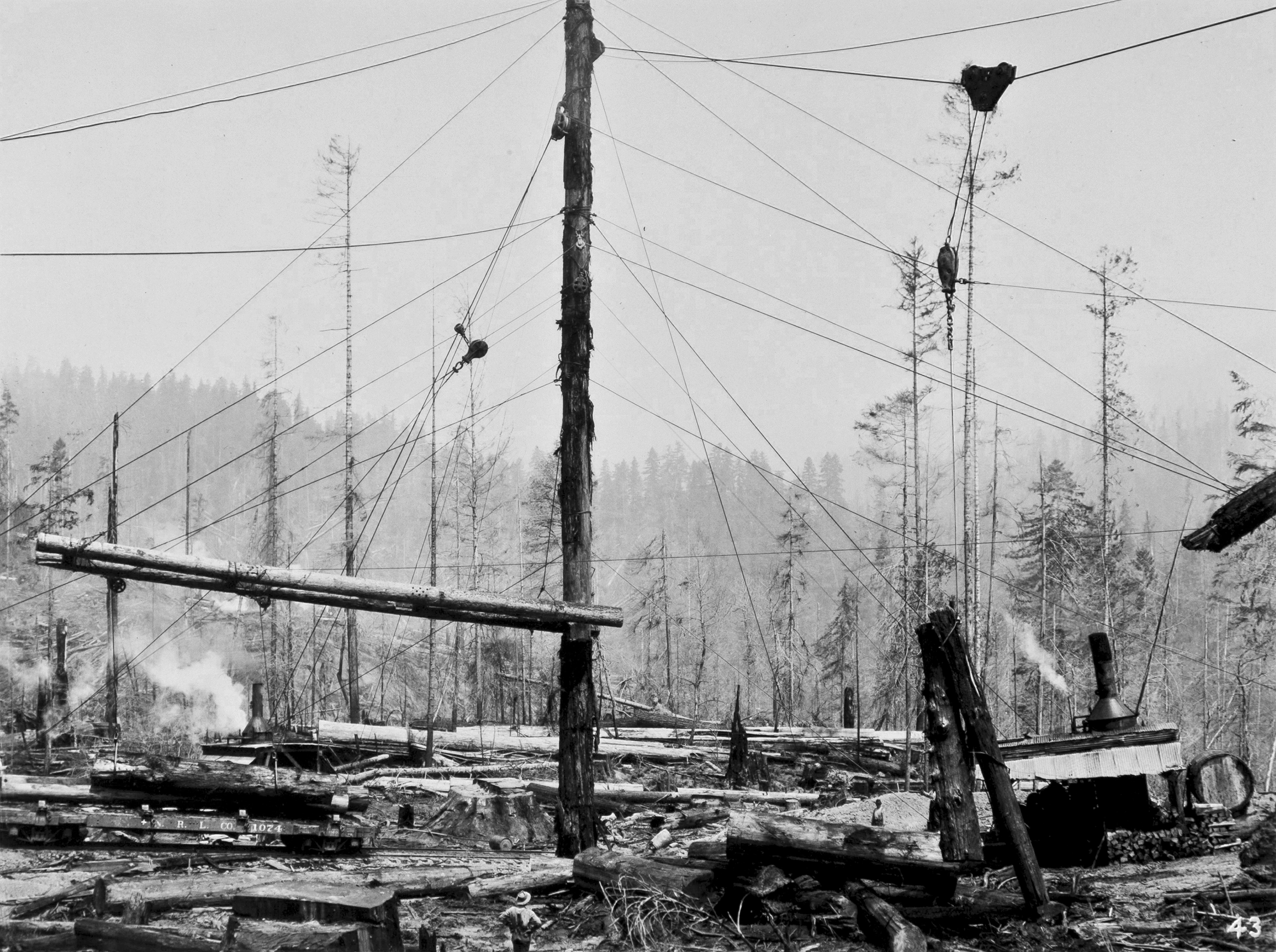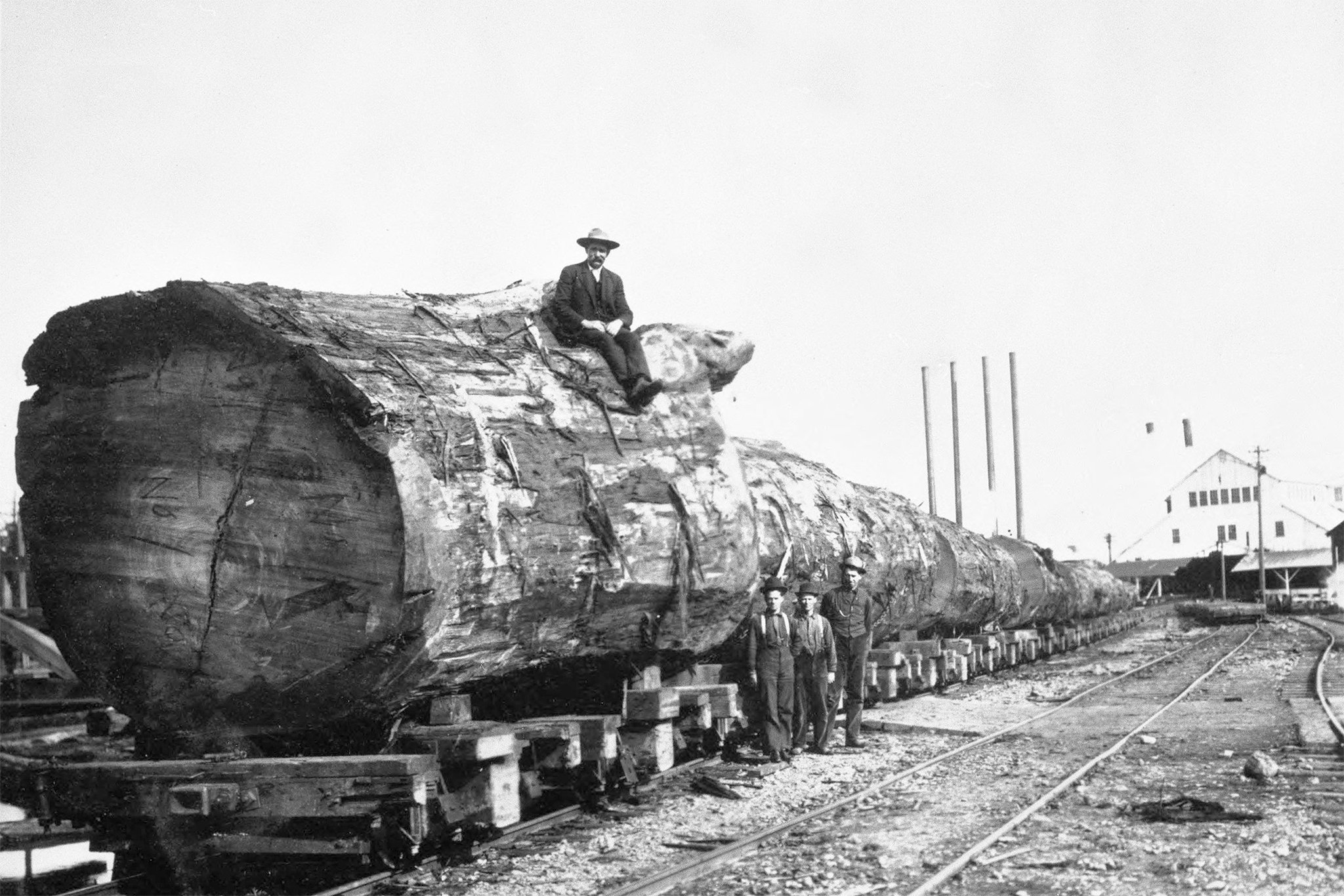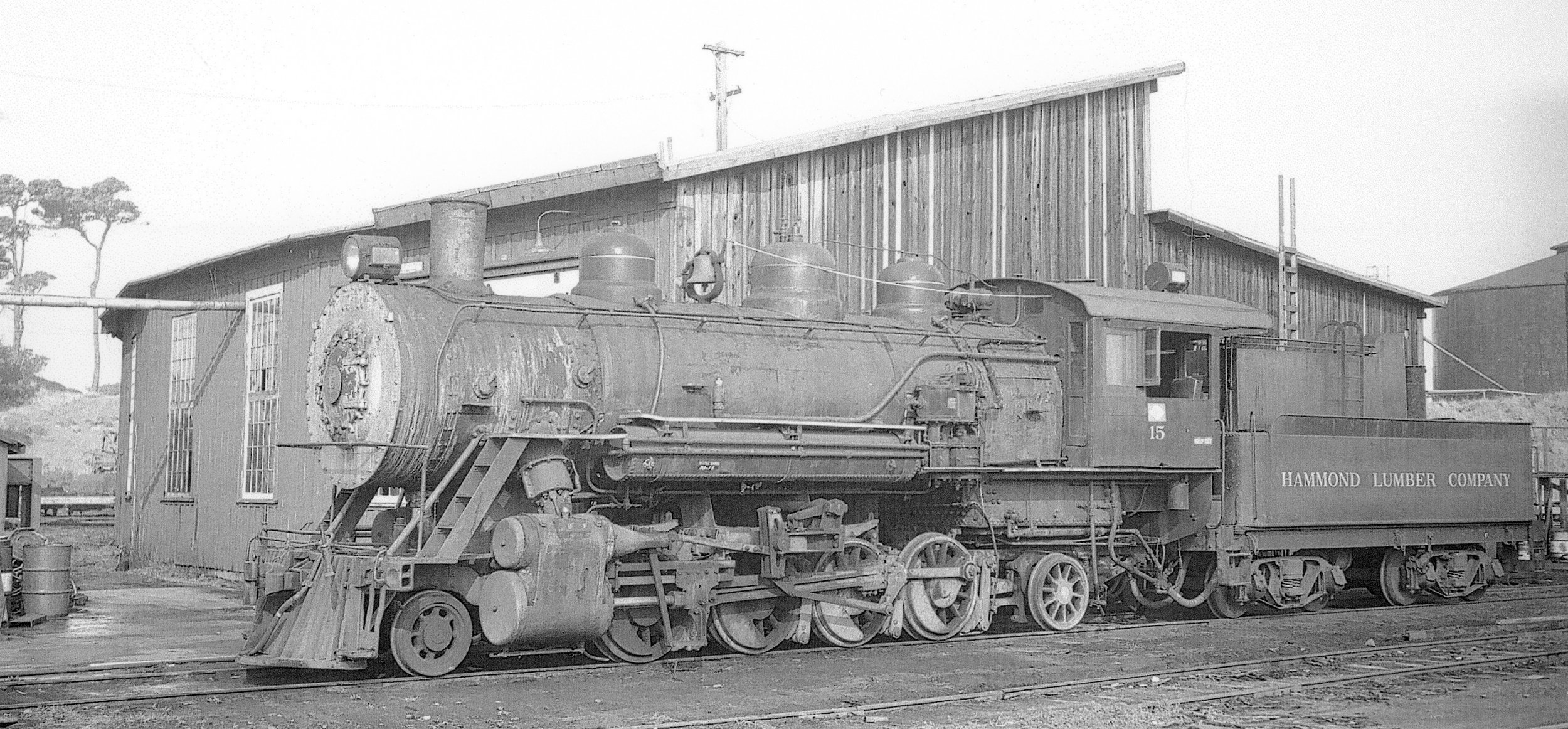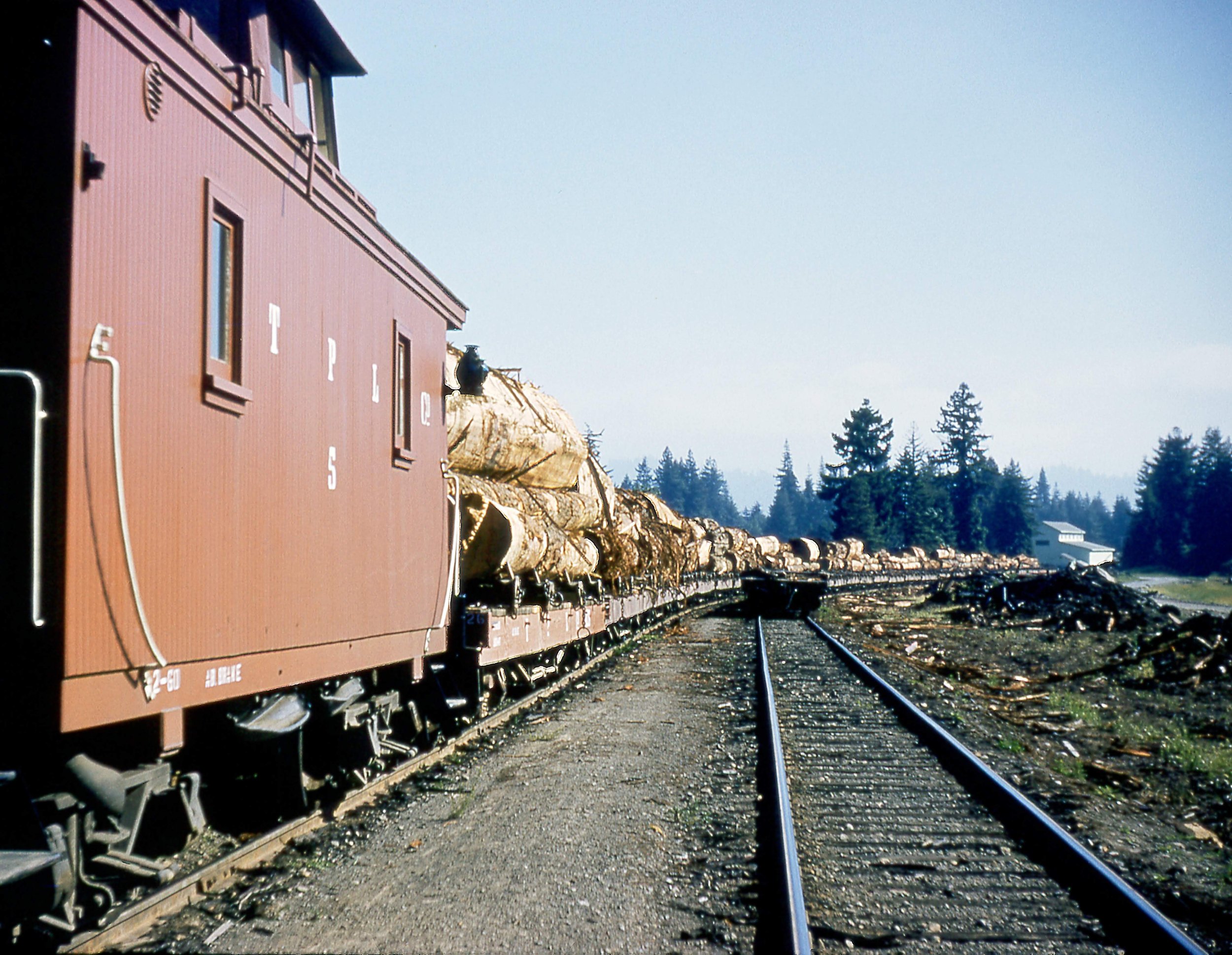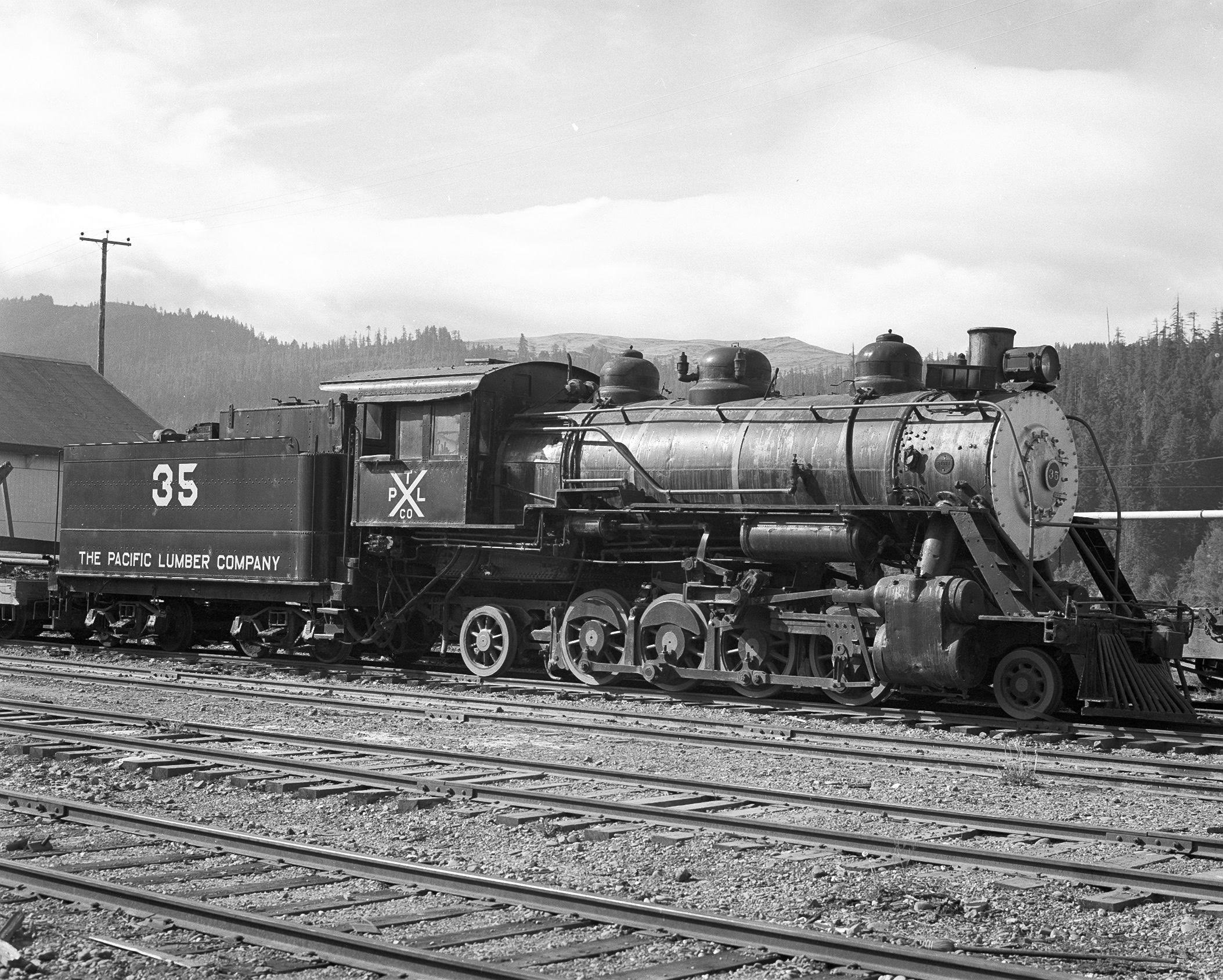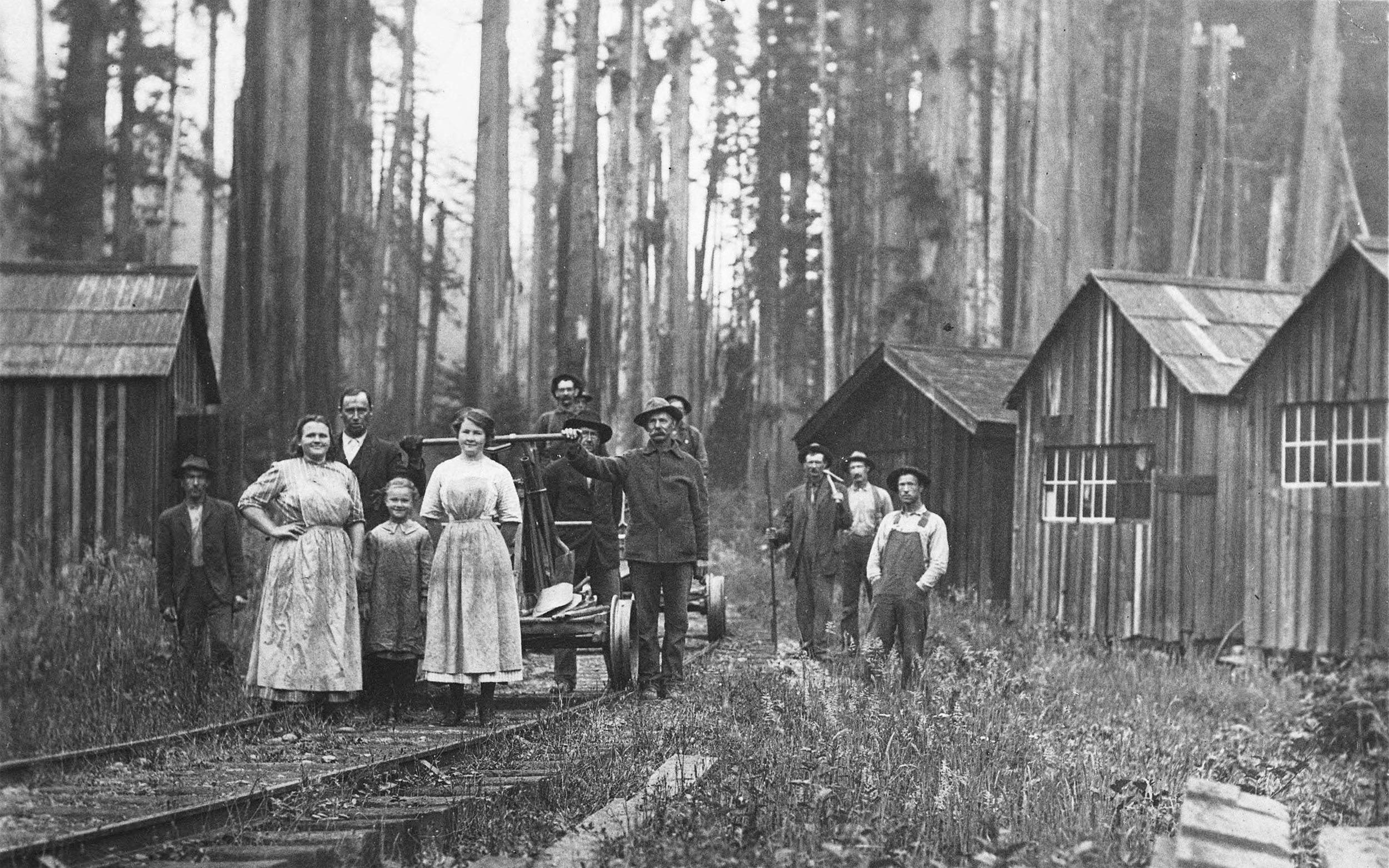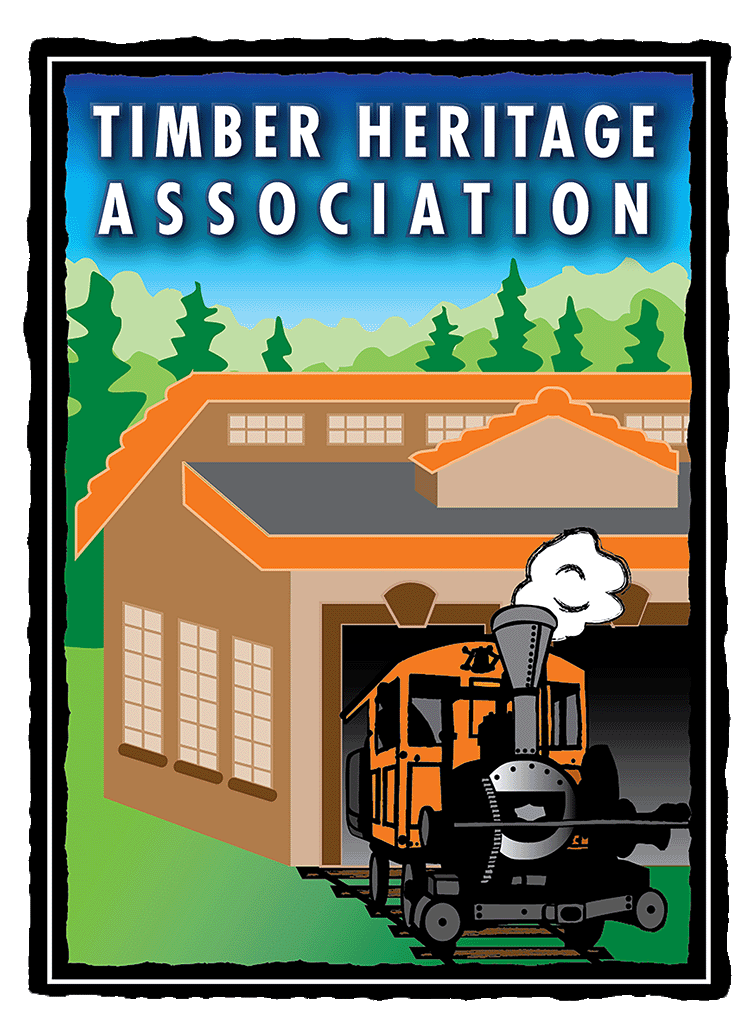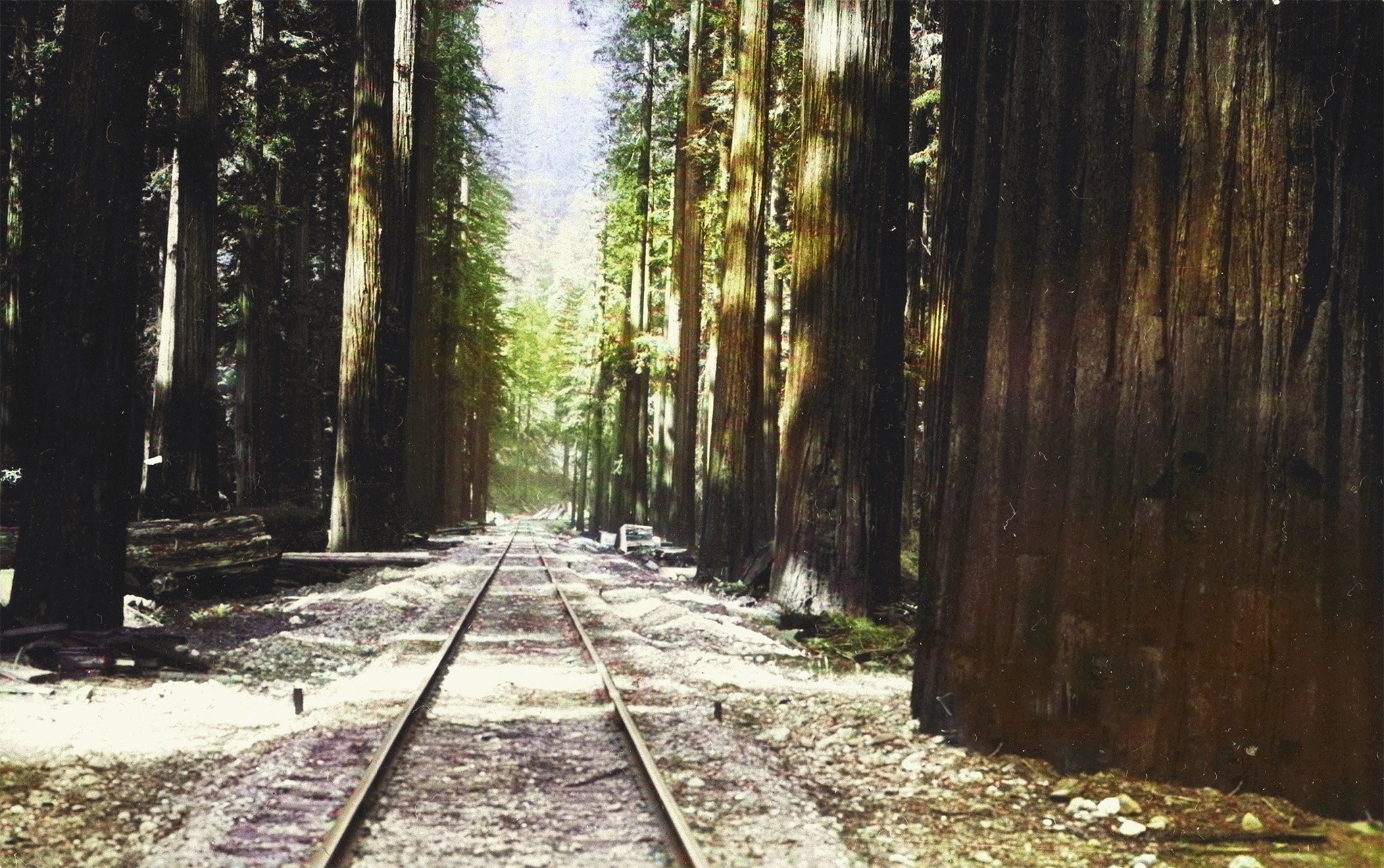
Humboldt County History
The discovery of gold in California ushered in the most unimaginable, dramatic, immediate and rapid growth of the lumber industry. California’s population grew four fold between 1850 and 1860. San Francisco’s population grew from 2,000 in 1849 to 59,000 by 1855. People had to have lumber–for homes, for stores, for industry, even to build sluice boxes to pan gold. Prices for a very limited supply of lumber shot up from $50 to $500 per thousand board feet in a single year. New England sea captains filled their holds and piled their decks high with lumber which they sold at enormous profits in San Francisco.
The irony of bringing lumber thousands of miles when the entire Northern California, Oregon and Washington coast was carpeted with large trees was not lost on entrepreneurs. They explored the Redwood Coast including Humboldt Bay as well as the more accessible Puget Sound area. Humboldt Bay, with its surrounding forest of giant trees was first reached by land when Josiah Gregg and his party looked for a shorter supply route to Trinity River gold miners in 1850. The first sawmill opened up the same year. By 1854 there were nine mills on the bay. Though only three years old, Eureka produced more lumber than any other Pacific area. By 1859, the area around Humboldt Bay was “the most extensive lumber district in the state”, according to a state report. Within 30 years the North Coast had 400 mills cutting some of the largest trees in the world. Eureka and surrounding areas are here because of lumber. The fancy Victorian homes were built by people associated with the timber industry; the banks, railroads and ships were owned by timber people. The city’s political leaders were also timber barons. Men, women and children from every class, nationality and education level were here because of timber.
Cutting, moving and milling trees the size of redwoods had never been done before. People from this important timber growing area had to figure out how to do it. The first redwoods were cut by two men with axes, sometimes taking as long as a week. The axes were improved with double cutting edges and longer handles. The crosscut saw was lengthened considerably with handles at each end to take over half of the cutting work. A steam powered portable saw was tried as early as 1875. A 200 pound gasoline drag saw was invented in Eureka. Later other Eureka brothers developed a lighter 95 pound drag saw. Logs were moved using screw jacks, were floated or towed in nearby rivers and bays at first. Horses and oxen pulled logs longer distances on skid roads. Logging railroads, primitive at first, began hauling logs to mills. Some of the first railroads in the state were here in Humboldt County. Sawmills initially used a single blade moved up and down by a crank, then a longer sash saw, then the sashgang saw which had two or more saws in the sash cutting at the same time. Saws to cut redwood had to be made stronger and more durable than saws used elsewhere. Fast circular saws invented locally replaced the reciprocating blade saws. Then came the double circular saw. Blade sizes increased from 12” to eventually as much as 72”. Double circular saws were replaced by newly invented Third Saws where four saws worked in tandem to cut one even larger log. Finally the first band saw on the Pacific Coast was used here.
The most significant invention in the timber industry was the steam donkey in 1882. This adaptation of steam power to move large logs revolutionized the industry in the West and beyond. John Dolbeer of Dolbeer & Carson Lumber Co. in Eureka was the inventor. His inventiveness was not limited to just one “big breakthrough” either. He invented a circular saw to better cut lumber in 1860, a tallying machine in 1863, a steam powered portable felling and bucking saw in 1875, an improved vertical spool donkey in 1883 and a logging locomotive which doubled as a donkey engine, also in 1883. John Dolbeer was not alone in his innovations and inventions. There was N.E. Pine, Percy and Bethune Perry, David Evans, John Vance, Cliff Merrill and a tremendous number of other local pioneers who invented and adapted things large and small to better accomplish the task at hand.
The redwood forest was unique because of the size of these giant trees, some 20 feet across. Early photographers pictured whole school student bodies standing atop one stump. Early local towns constructed dance floors on a single tree stump. Redwood was unique in that it was not only beautiful, but was less susceptible to rot, insects and fire. It was used for railroad ties, tunnel timbers, ornamentation on Victorian homes. Redwood rebuilt San Francisco seven times after fires. Redwood homes were noted as less likely to burn in the 1906 San Francisco fire, so homes rebuilt with redwood required no permit. Redwood was used on many notable projects such as the long redwood pilings used in building the Golden Gate Bridge. Redwood was exported all over the world. Large local redwood lumber companies had offices and some had retail yards all over the U.S.
The largest redwood lumber companies anywhere developed here. Two company towns built by some of these large companies remain today. Conservation, better timber practices, preserving and protecting forest lands, timber wars, environmental protection advocacy all started here. The history of timber is not only of local importance, but has national significance and the many stories need not only to be preserved, but need to be told.
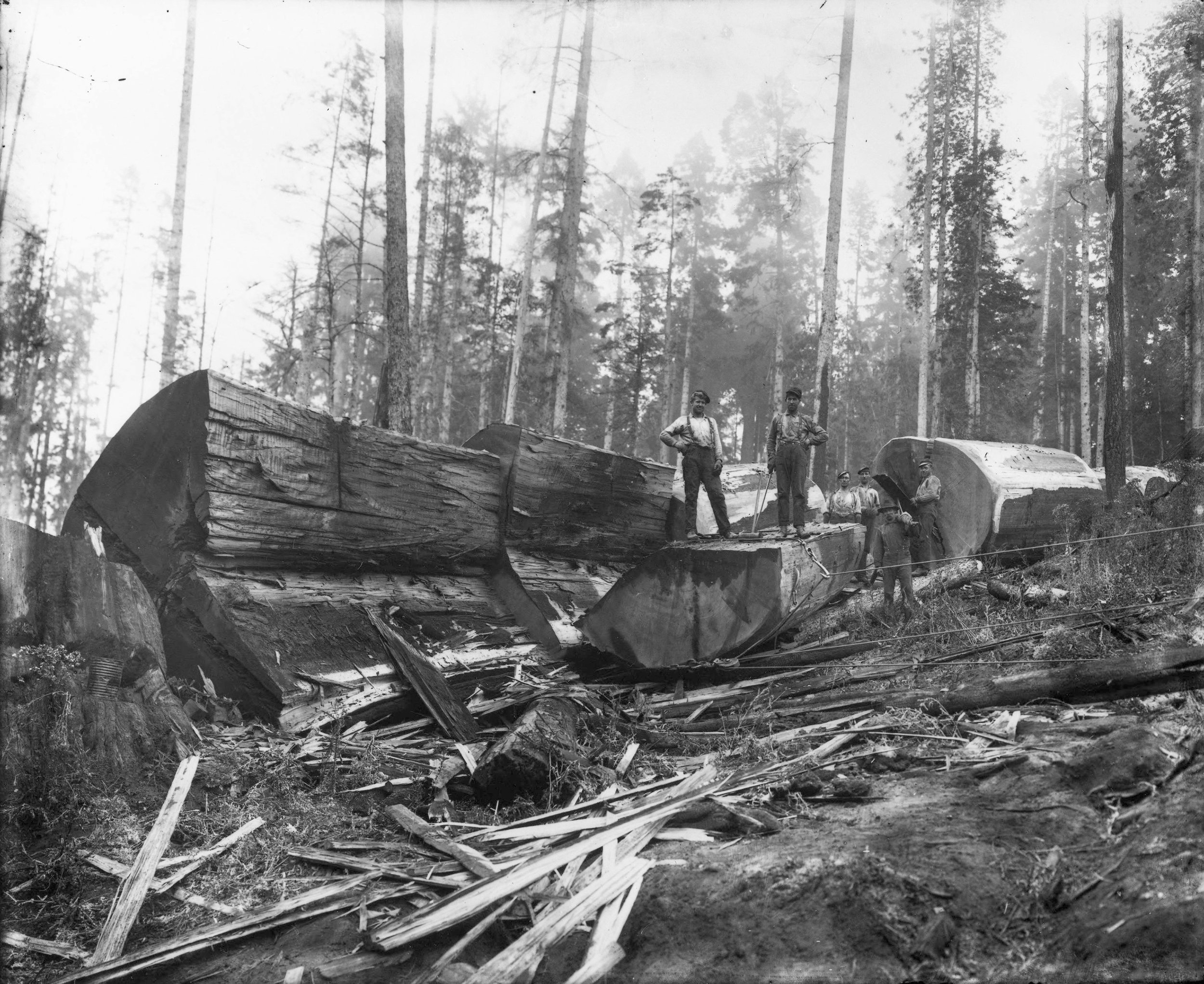
Timber Company Towns
Timber towns listed here had two things in common, they were towns owned by a timber company and they had a mill where lumber was produced. Lumber camps where loggers lived in company housing closer to their work and larger cities with mills but not owned by a lumber company are not included. As automobile travel improved in the 1930s, camps or smaller company towns declined or closed. Two company towns remarkably remain in Humboldt County today (though both are in transition). That they still exist is probably because they were larger and the company met more of workers needs, making them a pleasant place to live.
Cranell (Bullwinkle)
The mill and town were built by the Little River Redwood Co. in 1906. The site was purchased from Conrad Bullwinkle and the town’s original name was Bullwinkle. In the 1920s, the name was changed to Crannell in honor of the company’s president (who was an absentee owner who lived in Ottawa, Canada). The Dolbeer & Carson Lumber Company’s Humboldt Northern Railway hauled Little River’s lumber to Humboldt Bay. When Dolbeer & Carson had cut all their timber in the area, the railroad was sold to Little River Redwood. From 1924 to 1931, the company had serious financial problems. In 1931 they merged with Hammond Lumber Comany. The same year the Crannell mill was closed and the timber was transported to Samoa to be milled. The town became headquarters for the railroad and woods crews. After the railroad closed in the early 1960s, the town declined and was razed some years later.
Falk
The Elk River Mill & Lumber Co. acquired 9,000 acres of Redwood timber on the South Fork of the Elk River in 1882. Because it was so isolated, the town of Falk had to be built along with the mill. The Bucksport & Elk River Railroad was built from the mill to Humboldt Bay. The Elk River Mill & Lumber Co. had its own logging railroad beyond the mill. During the Great Depression, operations slowed and then halted. Operations resumed briefly in 1936, but in 1937 all operations were shut down for good. Workers moved out. In 1952 some of the dilapidated buildings were torn down. The last resident left in 1961 after his house burned. In 1979 the remaining buildings were bulldozed.
Korbel (North Fork)
In 1882, the Korbel Brothers, vinyard owners from Sonoma County, built a mill on the Mad River to produce lumber for wine vats and other purposes. The Arcata & Mad River Railroad was also purchased and extended to the mill at North Fork. The name of the town was changed to Korbel in 1891. The Korbel Brothers sold their holdings to Northern Redwood Lumber Company in 1913. In 1956 Simpson Redwood Company purchased Northern Redwood. The town declined beginning in the 1930s since it was so close to Blue Lake and Arcata and automobile transportation was improved. Few houses are left near the mill at Korbel.
Metropolitan
The Metropolitan Lumber Company was incorporated by investors who built a sawmill on the Eel just north of Rio Dell in 1904. A company town was built as well. It consisted of a general store, post office, school, saloon (down the road), small cabins, larger homes for married workers and a hotel. After nearby timber was all cut, a logging railroad was built across the Eel river to more timber. When most of that lumber was finally cut by 1925, the mill closed. Twenty-six company houses were purchased by two brothers and moved to Rio Dell. The hotel, damage by the 1964 flood, lasted until a couple of years ago. A few privately owned houses remain today.
Scotia (Forestville)
In 1869 the Pacific Lumber Company was incorporated with 10,000 acres of forest land. Logging began in 1882 and land for the mill and town was purchased. Railroad construction began so lumber could be transported to the company’s wharf at Fields Landing. The town’s name of Forestville was changed to Scotia to avoid confusion with a town in Sonoma County (many of the workers were Nova Scotians). The mill was destroyed by fire in 1895. It was replaced with a new, larger mill in 1896. Pacific Lumber became the largest producer of lumber in the area, acquiring timber lands and other lumber companies through the years. A hostile stock market takeover in 1986 took the company out of the Murphy family hands. The company filed for bankruptcy in 2008 and was sold to Humboldt Redwood Co. The town was sold to another company and is in transition but it remains one of the few company towns still in existence in the U.S.
Newburg
In 1882, local investors bought a stand of redwood timber near Fortuna and formed the Eel River Valley Lumber Company. In 1884 the mill was completed as was the town called Newburg. There were 20 houses, 25 cabins and a store. A spur was built when the Eel River & Eureka Railroad was completed to Fields Landing. Mrs. Dodge became the company president when her husband died in 1911 and the company name was changed to the E.J. Dodge Lumber Co. Logging was suspended in 1930 due to the Depression and in 1931 the mill shut down. It was dismantled in 1943 and a number of buildings were sold for their lumber.
Samoa (West Eureka)
In 1889 real estate developers formed the Samoa Land And Improvement Company and purchased 270 acres of land on the peninsula opposite Eureka. After John Vance Mill & Lumber Company’s Eureka mill burned in 1892, the owners decided not to rebuild the mill in Eureka but to purchase cheaper land in West Eureka or Samoa. (U.S. involvement in American Samoa was prominent in the news.) A sawmill and shop complex was built; though close to Eureka, there was no road access to Samoa, but only by boat. A town was necessary. In 1893 the Eureka & Klamath River Railroad Co. was incorporated to run from Eureka (by ferry) to Samoa, then to Essex where the Vance timber was located. In 1900 A.B. Hammond purchased the Vance mill and property. In 1912, Hammond Lumber Co. bought any privately owned residences to make Samoa a company town. The Samoa Block town center was built in the 1920s. Georgia Pacific purchased the Hammond Lumber Co. in 1956. Louisiana Pacific became owner due to a 1972 settlement with the Federal Trade Commission. Simpson Timber acquired the property primarily for the timber; they sold the town to Samoa Pacific which plans to develop it, but keep its historic nature.
